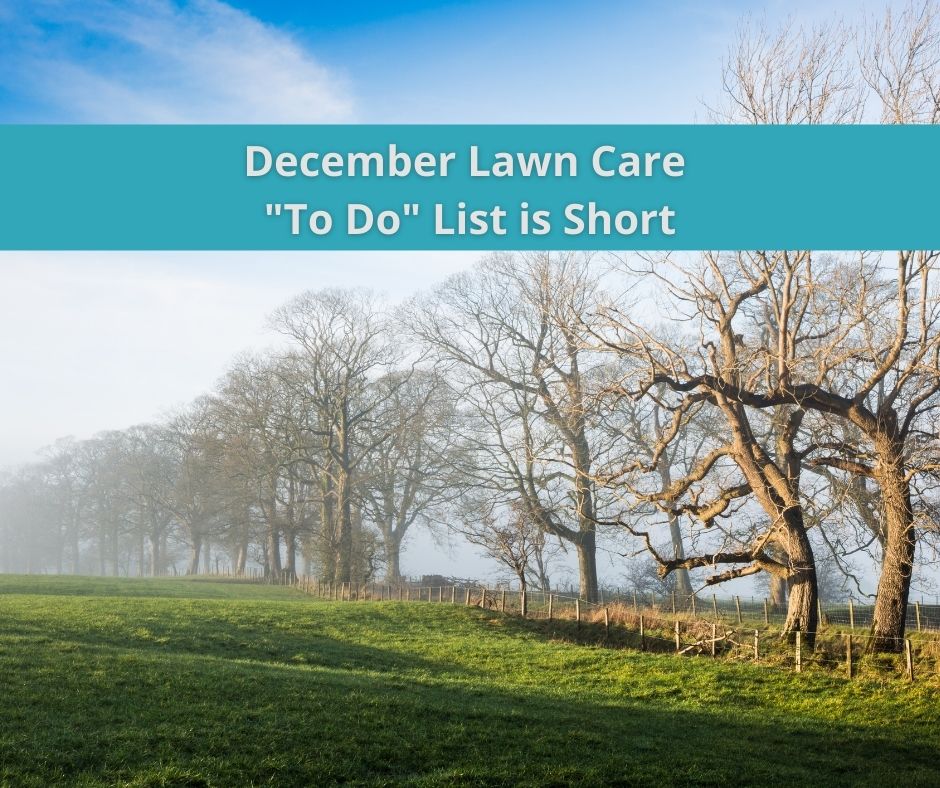If it feels like you’re not doing much on your lawn in December, that’s a good thing. The experts agree: this is a month you can truly give your yard a rest.
Warm-season grasses have all but stopped growing and are essentially dormant. You should head into winter with your grass height at about three inches. This will keep roots insulated during the cold months. If you overseeded your lawn with a temporary cool-season grass, it can be mowed to keep grass at that three-inch height.
Fescues and Kentucky Bluegrass will germinate in soil that is 55 degrees or warmer; the goal here is to continue to mow grass consistently at the recommended height for your seed.
In most cases, you will not need to water your lawn. Don’t forget to winterize your irrigation system and store any outside hoses.
Forget about fertilizer until the spring. The rule of the thumb is that you should apply the last fertilizer of the year 4-6 weeks before the first average frost, which has already passed in every region.
“If we make our fertilizer application too late, especially when the soil temperature is below 50-55 degrees, we see our root activity pretty much stop at that point,” said Chrissie Segars, a turfgrass specialist and professor at Texas A&M AgriLife Extension in Dallas. “If we’re putting nitrogen or another type of fertilizer down, we will see a lot of that lost to the environment because the roots are just not active and are not taking it up.”
Same goes for overseeding. Wait until late spring to overseed Bermuda and Saint Augustine lawns, when the grass starts growing again in warm soil. The best time to overseed Fescues and Kentucky Bluegrass lawns is in the fall.
Also too late is aerating. If you do it now, you’d only be allowing cold air to get into the soil and you’d be interrupting pre-emergent weed control. Wait until spring.
What to do with leaves on the lawn? We cover that topic here.

